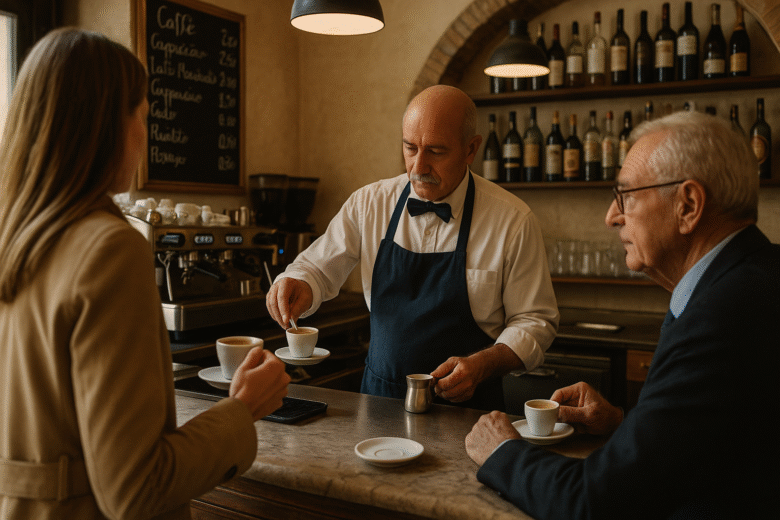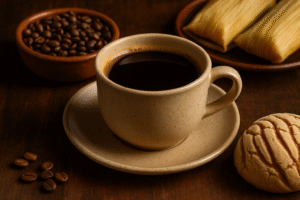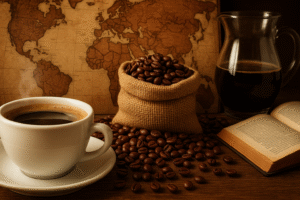In Italy, coffee is more than a drink—it’s a way of life. It punctuates the day, fuels conversations, and reflects a unique blend of elegance, routine, and community.
Italian coffee culture is deeply rooted in tradition. It’s fast-paced yet intentional, modest yet rich with meaning.
Espresso as a Cultural Symbol
The heart of Italian coffee culture is espresso. Served in small porcelain cups, it’s strong, simple, and consumed quickly while standing at a bar.
Espresso represents efficiency, precision, and style. It’s not meant to be taken slowly, but rather enjoyed as a quick break that fits into the rhythm of the day.
People don’t linger at the bar. They sip, exchange a few words, pay, and leave. Yet in this short moment, a connection is made—between customer and barista, between neighbors, between friends.
The Bar: Italy’s Living Room
What Americans might call a “coffee shop,” Italians call a bar. But this is no sports bar—it’s a central part of daily life.
The Italian bar is where people start their mornings with a caffè and cornetto, check the news, and greet familiar faces.
It’s also where mid-morning breaks, after-lunch digestion, and late afternoon pick-me-ups happen.
Many bars are family-run, often for generations. Regulars are known by name, and their preferred order is remembered without asking.
Coffee and the Italian Daily Schedule
Coffee in Italy follows a set rhythm. Each part of the day calls for a specific type of drink.
In the morning, milky drinks like cappuccino, latte, or macchiato are common. These are always taken with breakfast, never after meals.
After 11 a.m., only espresso or its close relatives are consumed. Asking for a cappuccino in the afternoon marks you as a tourist.
The digestivo espresso after lunch is sacred. It helps settle the stomach and signals the end of a meal.
In the evening, a quick coffee might precede a passeggiata—the traditional stroll through the city.
Social Coffee, Not To-Go
Italy doesn’t embrace the to-go coffee culture. Walk down a street in Rome, Florence, or Milan, and you’ll see very few people carrying coffee cups.
Coffee is meant to be consumed at the bar, on the spot. This reinforces the idea that it’s more than fuel—it’s a moment of pause, even if brief.
The experience is tactile: the heat of the ceramic cup, the smell of fresh grounds, the interaction with the barista.
By avoiding takeaway, Italy preserves the social function of coffee. It’s about presence, not convenience.
The Language of Coffee
Ordering coffee in Italy is an art form. There are subtle differences that locals know instinctively.
A “caffè” is always espresso. A “macchiato” is espresso with a touch of milk. A “caffè lungo” is slightly diluted, and a “ristretto” is stronger and shorter.
Then there’s caffè corretto, espresso with a splash of liquor—grappa or sambuca, usually. Often taken in the morning by older men, it’s as much a tradition as it is a drink.
These choices say something about the drinker—age, personality, lifestyle. Coffee in Italy is a kind of social language.
The Art of the Barista
Baristas in Italy are masters of their craft. Many undergo apprenticeships and pride themselves on consistency and speed.
They remember regulars, manage complex morning rushes with calm, and create an atmosphere of familiarity.
Unlike in some other countries, being a barista in Italy is seen as a respectable profession, not a transitional job.
The barista holds a special place in the community—as host, listener, and provider of daily comfort.
Coffee and Conversation
Though the act of drinking coffee is brief, the conversations it fuels can be long and meaningful.
A quick espresso often turns into a chat about the local football team, politics, or neighborhood gossip.
Business meetings, romantic dates, and reunions with friends often begin with a coffee.
It’s a cultural lubricant—a reason to sit down, face each other, and engage. Even without coffee, people will say “let’s grab a caffè” as an invitation to connect.
Rituals of Respect and Order
There is a sense of etiquette around Italian coffee. Locals pay first, place their receipt on the bar, and only then give their order.
Crowds at the bar self-organize in a fluid, respectful rhythm. There’s no yelling, no line—just a shared understanding of whose turn it is.
Tourists may find it chaotic, but for Italians, it’s perfectly choreographed.
Even small details matter. Stirring too long, letting the crema settle too much, or over-sugaring can mark you as inexperienced.
Coffee and Generational Bonding
Coffee is also part of intergenerational relationships. Children are introduced to the taste early—often through caffè d’orzo, a barley substitute.
As they grow, they’re gradually welcomed into the ritual of coffee, especially as teenagers.
Parents and grandparents share stories over coffee. It’s a way to pass down traditions, news, and advice.
Coffee becomes a bridge between generations—a shared daily experience that roots families in culture.
A Marker of Regional Identity
Different regions in Italy have different coffee customs. In Naples, coffee is taken very strong and hot. In Trieste, Austrian influence adds cream and froth.
Some towns have hyper-local variations or signature drinks. This adds texture and regional pride to the broader national ritual.
A Neapolitan will swear by their city’s superior coffee, just as a Roman might boast about their neighborhood barista.
More Than a Beverage
In Italian life, coffee is never just a beverage. It’s a time marker, a comfort, a conversation starter, and a small luxury.
It anchors the day, offers pause, and connects people in both fleeting and meaningful ways.
To understand Italian society is to understand how they drink their coffee—not in haste, but with style and purpose.
In this ritual, Italians find daily beauty, order, and joy.

Marcio Luzardo is a coffee enthusiast and the voice behind Tudo Viraliza. With a passion for turning curiosity into practical knowledge, he shares easy-to-follow tips, guides, and insights to help readers enjoy better coffee every day. When he’s not writing, Marcio is exploring new brewing methods or diving into the rich stories that connect coffee to culture, lifestyle, and wellness.



